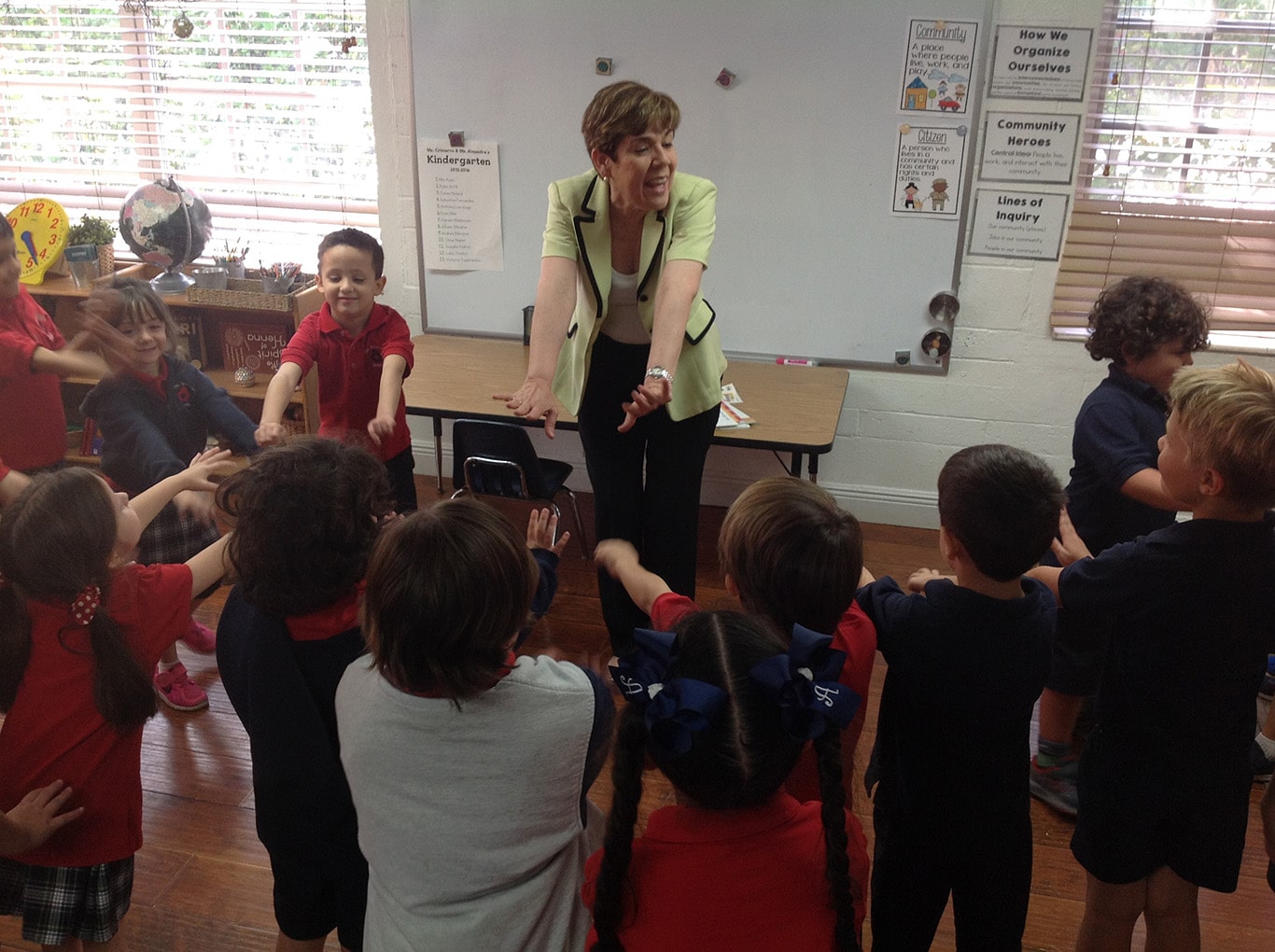Teaching with songs is an amazing tool for helping young children acquire a new language.
Singing with children can be a fun and valuable experience. When you sing with young children, you can adjust the speed and volume to fit their abilities. You don’t need to sound like a professional singer. As long as you are enthusiastic, young children will enjoy it, and want to sing along.
Young learners pick up vocabulary, grammatical structures, and the rhythm of the language simply by doing what we all love to do…singing songs.
Languages4kidz uses familiar songs and melodies, finger plays and nursery rhymes that have been passed down from one generation to the next. Some have been adapted for Languages4kidz units to foster the development of children’s skills in the target language. Others have been created to enlighten vocabulary that are an important part of children’s lives, such as people (family members, teachers, friends), objects (clothing, furniture, cars, bikes), daily rituals (brushing teeth, bedtime), and special events (holidays, going on a field trip).
In Languages4kidz lesson plans music functions in a variety of ways. It helps teachers create a safe and comfortable environment, establish routines, signal transitions, create bonding experiences or teach vocabulary.
Following are some ways in which you can use music and teach with songs in your classes:
- · Welcome children with songs.
- · Begin your lesson with a welcoming song like “Sing Hello”.
- · Chant a song or play music to signal transitions.
- · Play music to manage the energy level of the class.
- · Play music to introduce new language or to review vocabulary already introduced.
- · Introduce songs with gestures.
- · Encourage children to sing and dance.
- · Choose songs to enhance your story time.
- · Last but not least wrap up your classes by singing a Good-bye song.
Music is a powerful learning tool. It is not only a great way to introduce new vocabulary, but it can also contribute to children’s progress and learning in many different areas. Music supports self-expression, cooperative play, creativity, emotional well-being, and development of social, cognitive, communication, and motor skills. Music and singing are a fun and effective way to help young children learn.
I encourage you to use music and lots of songs in your classes. It will make your classroom a warmer, more effective learning environment.






